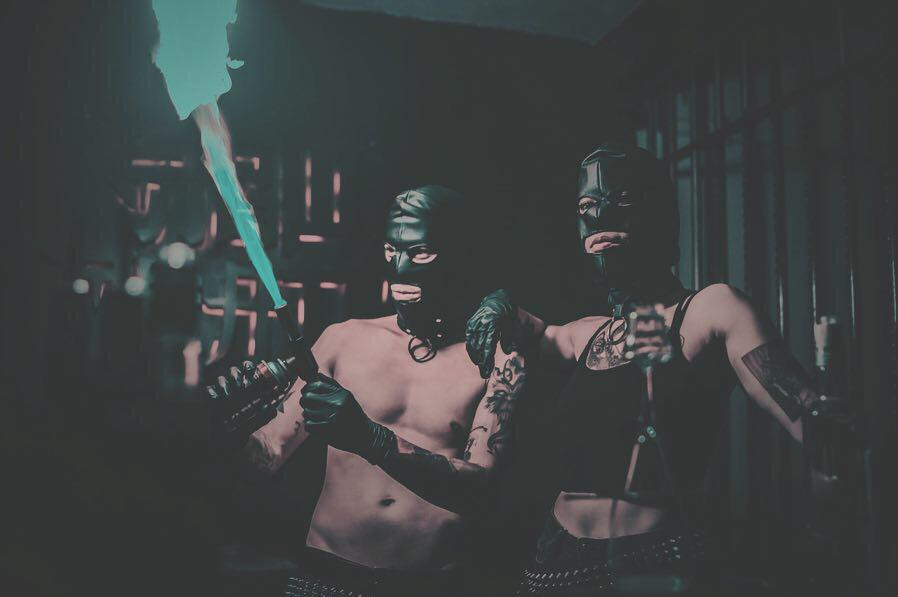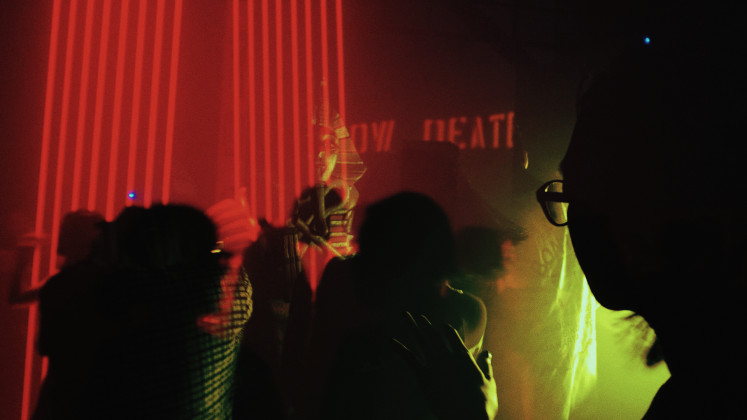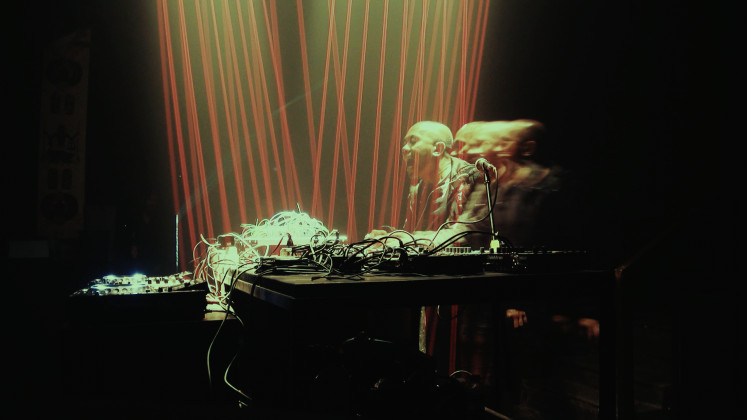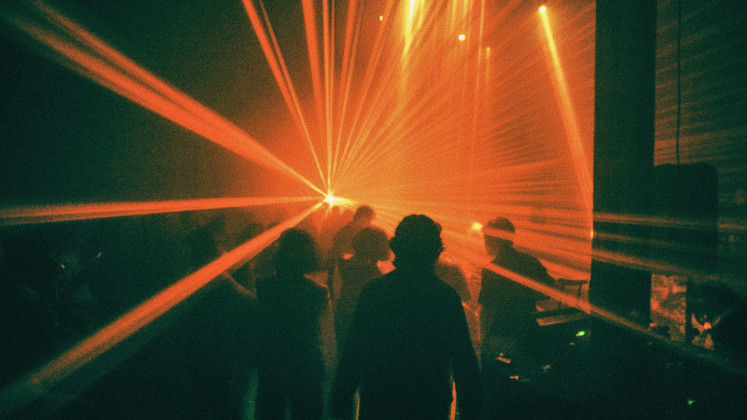Popular Reads
Top Results
Can't find what you're looking for?
View all search resultsPopular Reads
Top Results
Can't find what you're looking for?
View all search resultsPurity, discontent drive Indonesia’s illegal rave scene
The enigmatic Slow Death Mobile group holds unauthorized raves in big cities. The organizers and attendees believe these events have something deeper to communicate.
Change text size
Gift Premium Articles
to Anyone
“Were you scared?”
That was the first question that Monkey Man, one of the enigmatic figures behind Slow Death Mobile asked me. He was referring to No Man’s Land, the last rave the group held before COVID-19 restrictions were imposed. While Slow Death Mobile might seem like just another electronic music collective or event organizer in the increasingly crowded scene, in truth, they are anything but.
Their parties are few and far between, without any flashy invitations to flaunt or guest lists filled with a who’s who of the club scene. The most distinctive feature is that Slow Death’s parties are completely unauthorized. Their last rave took place at an undisclosed location in Bandung, in a nondescript venue away from prying eyes. News of the party spread mostly by word of mouth, and guests were required to provide their details on Slow Death’s website. The registration form required guests to acknowledge that the event would be an illegal gathering with the attendant risks.
After a knock on the door of a seemingly empty building and a mention of the code word – which referred to the ancient Greek god Dionysus – the doorman allowed the guests in. The venue was run down, with debris cluttered throughout the entrance and trippy visuals projected onto the walls. Inside the dark room, ominous electronic music blared loudly and dozens of people were lost in trances, every moment caught in stillness by the ever-blinking lasers. As the name suggested, it really was a no man’s land.
Slow Death's events reimagine parties as spaces free from the usual clichés of club events. (Courtesy of Slow Death Mobile/Slow Death Mobile archive)Omnipresent fear
Nearly a year later, just a few kilometers away from the site of the rave, I sat down with one of the people behind Slow Death. Monkey Man, who spoke under the condition that no personal details about him would be disclosed, noted the always-present danger of the raves. “We’re essentially trespassing on someone’s property and holding a party without any permits. The risks are very much real,” he said. Furthermore, he said no one could control who was attending the parties and how they behaved, so illegal drug consumption in the audience was an uncontrollable factor. “Fear is always present, to be honest.”
“At any moment, the authorities could bust the rave, and in a matter of seconds, life as you know it could cease to exist,” he said. Amid these risks, what is Slow Death’s raison d’etre? Monkey Man said it was something like a curse, an urge to be let out. “To make a very crude metaphor, it’s much like the urge to urinate. Nobody else can feel it, yet if you don’t let it out, you’re the one who will suffer. The same fact also applies that once it’s out, no one will feel relieved but yourself.”
He said it was not a feeling the rave’s attendees had chosen to have. “The urge does not come out of yourself. It’s like a revelation, even though it’s not something that grand as I believe everyone gets it. The question is, how far are you willing to answer that call?”
Monkey Man said his life would be much easier if he did not have this urge. “I have my own life and family. Why do I need to put my life at risk just for the sake of an idea?”
Asked to define who they were and what they did, Monkey Man said that Slow Death was “an idea”. The loss of excitement and numbing repetition of the local electronic music scene brought nothing more than a transactional interaction between the audience and the industry, he said. What they were in search of was purity. “A pure idea is something you can’t put a price tag on. If you pursue something that you don’t need to do while not getting anything in return from it, is that not purity?”
Rully Shabara of experimental duo Senyawa performs at No Man's Land in 2020. (Courtesy of Slow Death Mobile/Slow Death Mobile archive)This pursuit of purity also creates a kinship between Slow Death and the audience. “With everything to lose and absolutely nothing to gain, would you jeopardize your life only to come to a rave?” asked Monkey Man. The raves provided a democratic setting unlike typical parties, he said, and people from all walks of life could come—and come they did. More than mere parties, Slow Death treated their events as participatory art, in which both the performers and the audience were involved.
This democratic element is crucial to the group. Monkey Man mentioned that artists often saw themselves as being “above” everyday people to the point of being detached from others’ realities. In practice, these “everyday people” were what made Slow Death’s events possible.
The message seems to resonate. An audience member said, “Even if the party is illegal, I somehow feel safer and that I belong there, as opposed to typical parties held in established venues, which feel less egalitarian.” Devoid of any transactions, courage is the currency at the raves.
Slow Death’s parties seem like an alternate reality existing in parallel to the world outside. They refer to the particular time and space of the rave as a “temporary autonomous zone”, adapted from a concept by anarchist writer Hakim Bey in his book of the same name. While Monkey Man said the “pirate utopias” Bey wrote of could last for as long as power, secrecy and solidarity allowed, Slow Death’s events lasted only for a few hours. However, within this small time, Slow Death provided a shelter for those with whom the same ideas resonated.
Casting a stone
In June of last year, when uncertainty was becoming the norm, an e-mail by Slow Death reached my inbox—and those of others who were on their list. In the email, they talked about a “mundane realization” that in the prevailing times, social currency became irrelevant if people did not support each other. They asked about the well-being of the readers and said that if there was anything they could help with, readers could just reach out and they would be there.
No Man’s Land also featured laser and art installations by visual collectives Convert Textured and Blanco Benz Atelier. (Courtesy of Slow Death Mobile/Slow Death Mobile archive)“A lot of people replied expressing their thanks, but thankfully none of them are in a seriously bad position,” said Monkey Man. In fact, the crew was on standby to help if any need arose. Why go to such lengths for people who are essentially strangers? “Because we have been through the same participatory act together. That alone is enough reason. At [No Man’s Land], I put all my cards on the table, while unknowingly, I’ve put [the audience’s] cards on the same table. It’s the least I can do.”
In reference to the philosopher Nietzsche, Monkey Man said that in a fight with monsters, he was wary of turning into one himself—another reason, he said, why the group did everything the way it did. “Maybe what we do is just casting a stone into an ocean. But I can say that I have at least done that. Even if it does not create a ripple, I have cast a stone.”














